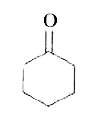Which of the two peroxide ion or superoxide ion has larger bond length ?
To determine which ion has a larger bond length between the peroxide ion (O2^2-) and the superoxide ion (O2^-), we will analyze their bond orders. The bond length is inversely proportional to the bond order, meaning that a higher bond order corresponds to a shorter bond length.
1. Identify the Ions:
- Peroxide ion: O2^2-
- Superoxide ion: O2^-
2. Determine the Total Number of Electrons:
- For the peroxide ion (O2^2-):
- Each oxygen atom has 8 electrons, and there are 2 oxygen atoms, so total electrons = 2 × 8 + 2 = 18 electrons.
- For the superoxide ion (O2^-):
- Total electrons = 2 × 8 + 1 = 17 electrons.
3. Construct the Molecular Orbital (MO) Diagram:
- For the peroxide ion (O2^2-):
- The MO diagram will have 10 electrons to fill.
- Fill the bonding and anti-bonding orbitals:
- Bonding orbitals: 6 electrons
- Anti-bonding orbitals: 4 electrons
- Bond order = (Number of bonding electrons - Number of anti-bonding electrons) / 2
- Bond order = (6 - 4) / 2 = 1
- For the superoxide ion (O2^-):
- The MO diagram will have 9 electrons to fill.
- Fill the bonding and anti-bonding orbitals:
- Bonding orbitals: 5 electrons
- Anti-bonding orbitals: 3 electrons
- Bond order = (Number of bonding electrons - Number of anti-bonding electrons) / 2
- Bond order = (5 - 3) / 2 = 1
4. Compare the Bond Orders:
- Peroxide ion (O2^2-): Bond order = 1
- Superoxide ion (O2^-): Bond order = 1.5
5. Determine the Bond Length:
- Since bond length is inversely proportional to bond order, the ion with the lower bond order will have a longer bond length.
- Therefore, the peroxide ion (O2^2-) has a larger bond length compared to the superoxide ion (O2^-).
Conclusion:
The peroxide ion (O2^2-) has a larger bond length than the superoxide ion (O2^-).
- Peroxide ion: O2^2-
- Superoxide ion: O2^-
- For the peroxide ion (O2^2-):
- Each oxygen atom has 8 electrons, and there are 2 oxygen atoms, so total electrons = 2 × 8 + 2 = 18 electrons.
- For the superoxide ion (O2^-):
- Total electrons = 2 × 8 + 1 = 17 electrons.
- For the peroxide ion (O2^2-):
- The MO diagram will have 10 electrons to fill.
- Fill the bonding and anti-bonding orbitals:
- Bonding orbitals: 6 electrons
- Anti-bonding orbitals: 4 electrons
- Bond order = (Number of bonding electrons - Number of anti-bonding electrons) / 2
- Bond order = (6 - 4) / 2 = 1
- The MO diagram will have 9 electrons to fill.
- Fill the bonding and anti-bonding orbitals:
- Bonding orbitals: 5 electrons
- Anti-bonding orbitals: 3 electrons
- Bond order = (Number of bonding electrons - Number of anti-bonding electrons) / 2
- Bond order = (5 - 3) / 2 = 1
- Peroxide ion (O2^2-): Bond order = 1
- Superoxide ion (O2^-): Bond order = 1.5
- Since bond length is inversely proportional to bond order, the ion with the lower bond order will have a longer bond length.
- Therefore, the peroxide ion (O2^2-) has a larger bond length compared to the superoxide ion (O2^-).
The peroxide ion (O2^2-) has a larger bond length than the superoxide ion (O2^-).
Topper's Solved these Questions
- CHEMICAL BONDING AND MOLECULAR STRUCTUREBOOK - CENGAGE CHEMISTRY ENGLISHCHAPTER - CHEMICAL BONDING AND MOLECULAR STRUCTUREEXERCISE - Solved Examples
36 Videos
- CHEMICAL BONDING AND MOLECULAR STRUCTUREBOOK - CENGAGE CHEMISTRY ENGLISHCHAPTER - CHEMICAL BONDING AND MOLECULAR STRUCTUREEXERCISE - Ex 2 .2 Subjective (Intermolecular Forces And H-Bonding)
7 Videos
- ATOMIC STRUCTUREBOOK - CENGAGE CHEMISTRY ENGLISHCHAPTER - ATOMIC STRUCTUREEXERCISE - Concept Applicationexercise(4.3)
19 Videos
- CHEMICAL EQUILIBRIUMBOOK - CENGAGE CHEMISTRY ENGLISHCHAPTER - CHEMICAL EQUILIBRIUMEXERCISE - Subjective type
1 Videos
Similar Questions
Knowledge Check
Which of the following have larger C-O bond length than C-O bond length of
 A
A B
B C
C D
D
Ethers in contact with air for a long time form peroxides. The presence of peroxide in ether can be tested by adding Fe2+ ions in it and then
AKCNS is addedBSnCl2 is addedCHgCl2 is addedDKI is added
Which of the following ion has highest ionic radius
View SolutionWrite the molecular orbital electronic configuration of peroxide and super oxide ions. Which out of these has higher bond order and why ?
View SolutionWhich of the following does not contain the true peroxide ion?
View SolutionWhich of the following diatomic molecule //ions have same bond order ? .
View SolutionOn exposure to air, alkali metals get tranished due to formation of oxides, hydroxides and carbonates on their surface. When heated in air or oxygen they burn vigourously forming different types of oxides depending upon the nature of the metal. The formation and stability of these metals can be explained on the basis of size of alkali metal ion and the anion. Peroxides are colourless, while superoxides are coloured. The normal oxides are basic while peroxides and superoxides act as oxidising agents.
On heating in excess of oxygen, potassium gives
View SolutionWhich ion has the largest radius ?
View Solution
